
Madinah is the second most holy city of Islam, after Makkah. It is also referred to as Al-Madinah Al-Munawwarah. The city holds importance due to its historical, spiritual, and religious essence. While Makkah is the center for Hajj and Umrah rituals, Madinah is the place that accepted Prophet Muhammad (PBUH) during the Hijrah (migration) and became his last resting place.
Visiting Madinah is described as an acute spiritual experience for Muslims in particular. This spiritual city is the home to various important ziyarat places in madinah . Pilgrims visit these places with the utmost respect for a spiritual experience and to seek blessings from the divine.
In this blog, we will travel through some of the most important list of ziyarat places in Madinah, thereby bringing before you their historical and spiritual relevance. Without much further ado, let’s get started.
Also Read:- Nabeez Drink Benefits for Health
What is Ziyarat?
Before we start with the top places to visit in Madinah for ziyarat, it is important to understand what exactly is meant by the term “ziyarat”. Ziyarat is the act of visiting a shrine or a tomb, especially that of the well-known or revered figures in Islam, like the Prophet Muhammad, his family and companions.
It is, in another sense, a kind of spiritual pilgrimage that need not necessarily be taken in the course of Hajj or Umrah. Ziyarat generally includes visiting the shrines of the Imams and other eminent personalities.
It also includes visiting historically and religiously important destinations. Ziyarat is meant to invoke blessings and as a respectful offering to the memories of these holy people who contribute a lot to the Islamic way of life.
Also Read:- A Guide to Umrah Ziyarat in Mecca
Importance of Ziyarat
During the holy pilgrimage of Hajj and Umrah, pilgrims from all over the world visit the revered places of ziyarat in the cities of Mecca and Madinah. It is an important part of the whole pilgrimage experience. Described below are the various reasons why ziyarat is considered perceived as an important part of the pilgrimage.
Spiritual Affiliation–
Pilgrimage to different kinds of holy places allows Muslims to deeply associate with their religion through reminiscence on the lives and teachings of these revered figures. Such spiritual affiliation helps cement their relationship with Allah and the Islamic way of life.
Blessings –
Pilgrims often visit the final resting place of prophets, saints, as well as martyrs of the religion to bless and invoke their mercy towards Allah. It is said that a prayer made at one of these places has a better chance of acceptance.
Knowledge of History –
Ziyarat allows one to learn and reflect on the central events and figures in Islamic history. It helps Muslims realise the sacrifice and contribution of early Islamic personalities
Showing Respect –
Ziyarat is a way to show respect rowards the holy personalities and their services in the cause of Islam. This reverence is constituted as an integral part of faith and gratitude.
Solidarity –
Ziyarat instils a sense of oneness and a feeling of fraternity among Muslims while they travel towards these spiritual spots, experiencing divine spirituality in their sanctity.
Places of Ziyarat in Madinah, Saudi Arabia
Many sites in Madinah are filled with deep significance for Ziyarat visitors, which resound with Islamic history and spirituality. Experiencing these sanctuaries offers not only an enhanced spiritual relationship with Prophet Muhammad but also, to a very great extent, a chance for reflection on the many varied and crucially important events in the birth and development of this young Muslim community.
Discussed below are the top Madina ziyarat places in Saudi Arabia.
Also Read:- 5 Pillars of Islam
Al-Masjid an-Nabawi (The Prophet’s Mosque)
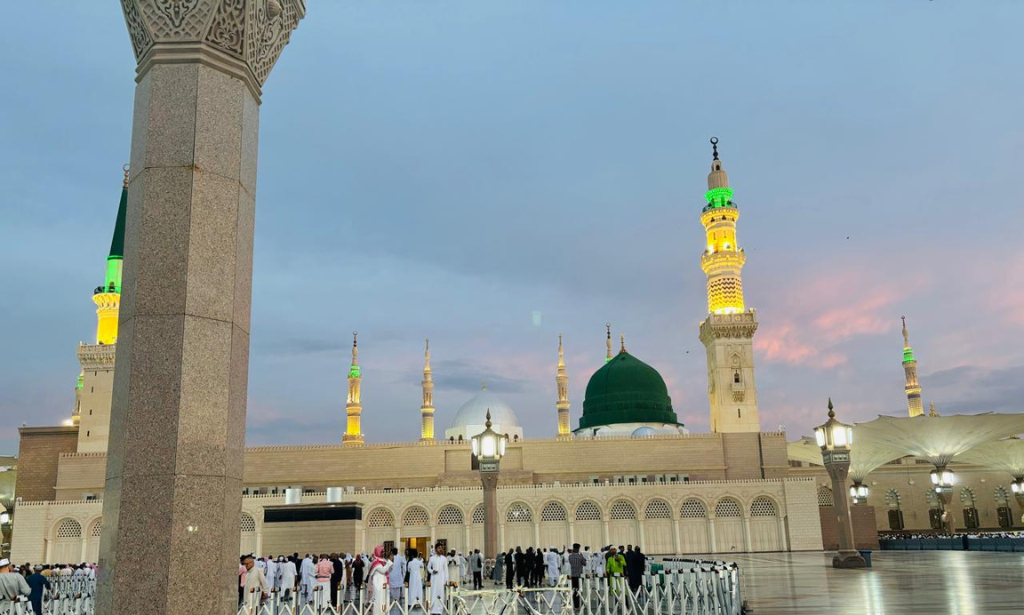
No visit to Madinah is complete without visiting Al-Masjid an-Nabawi, the Prophet’s Mosque. This mosque was initially built by Prophet Muhammad (PBUH) himself and later expanded by subsequent Islamic rulers. The mosque is a beacon of peace and spirituality, attracting millions of pilgrims each year.
The most famous part of the mosque is the Green Dome, under which lies the blessed tomb of Prophet Muhammad (PBUH). Next to him are the graves of his two closest companions, Abu Bakr as-Siddiq (RA) and Umar ibn al-Khattab (RA). Pilgrims offer their salutations and prayers here, reflecting on the life and teachings of the Prophet (PBUH).
Rawdah (Garden of Paradise)
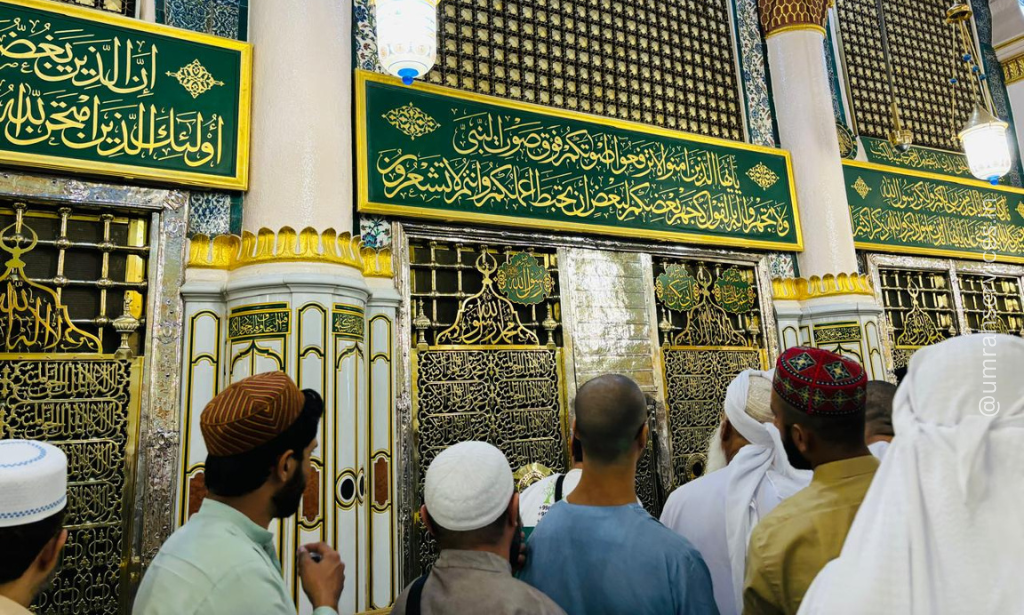
Inside the Prophet’s mosque is a small area known as Riaz Ul Jannah or Rawdah, located between the Prophet’s pulpit and his tomb. The Prophet (PBUH) said, “Between my house and my pulpit is one of the gardens of Paradise.” Praying in this area is considered highly rewarding, and pilgrims often seek to spend time here in devotion.
Jannat al-Baqi (The Baqi Cemetery)

Located near the Prophet’s Mosque, Jannat al-Baqi is the oldest and most significant cemetery in Islamic history. It is the final resting place of many of the Prophet’s family members, companions, and early Muslim martyrs. Over 10,000 companions of the Prophet are believed to be buried here.
The cemetery contains the graves of important figures such as the Prophet’s daughters, Fatimah (RA), and his grandsons, Hasan ibn Ali (RA) and Zainul Abideen (RA). Visiting Jannat al-Baqi allows pilgrims to pay their respects to those who played pivotal roles in early Islamic history. It is a must-visit place for Madinah ziyarat.
Masjid Quba
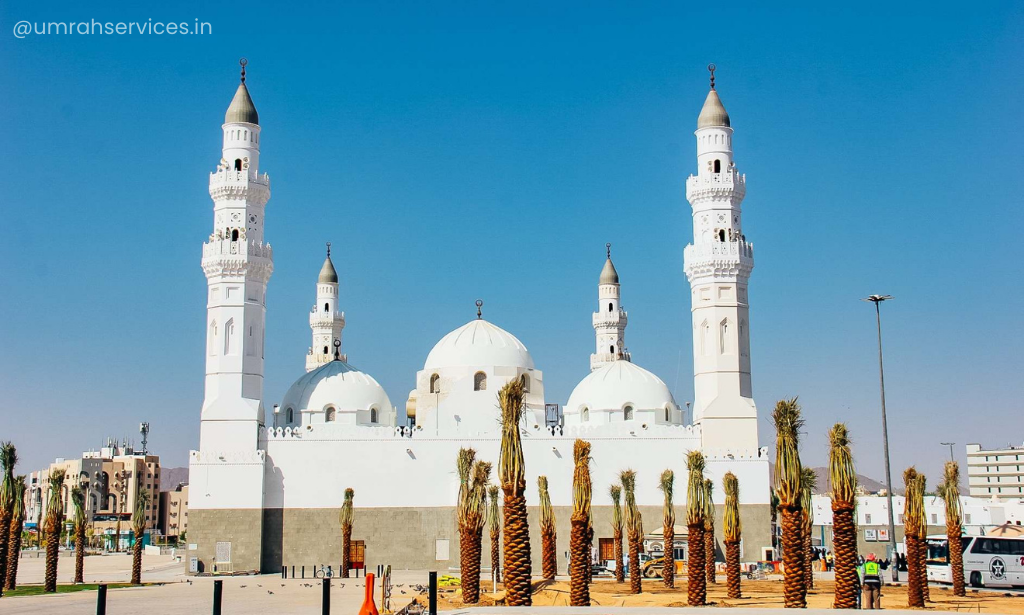
Masjid Quba holds the distinction of being the first mosque built by Prophet Muhammad (PBUH) after his migration to Madinah. It is located about three kilometres from the Prophet’s Mosque. The Prophet Muhammad (PBUH) visited this mosque frequently, and it holds a special place in the hearts of Muslims.
The Prophet (PBUH) mentioned, “Whoever purifies himself in his house and then comes to Masjid Quba and prays in it, he will have a reward like that of Umrah.” Pilgrims often visit this mosque during the Madinah Ziyarat, offering two Rakats of prayer, seeking the immense reward promised by the Prophet (PBUH).
Masjid al-Qiblatain (The Mosque of Two Qiblas)
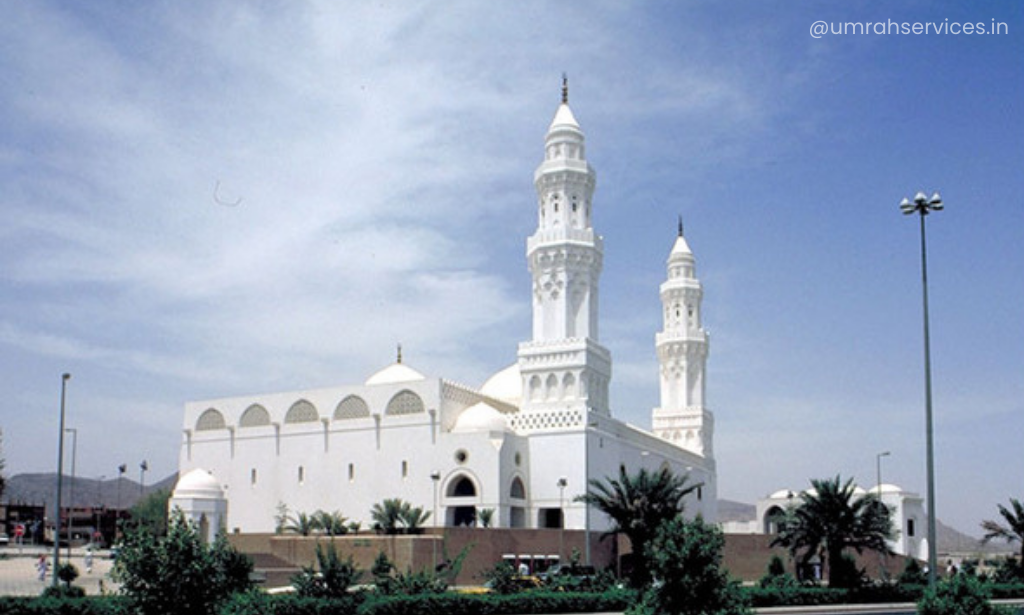
Masjid al-Qiblatain is a mosque with a unique history. It is the site where the direction of prayer (Qibla) was changed from Jerusalem to Makkah. The first congregational salah was prayed in this mosque following the change making it a symbol of this significant change in Islamic practice.
The mosque symbolises the unity of the Muslim Ummah (community) under a single Qibla, facing the Kaaba in Makkah. Pilgrims visit this mosque to reflect on the importance of this event and offer prayers.
Mount Uhud

Located on the outskirts of Madinah Mount Uhud is the site of the famous Battle of Uhud between the Muslims of Madinah and the Quraysh of Makkah in 625 CE. Although the Muslims had the upper hand in this battle, due to a strategic mistake, they lost many lives.
That battle took a great number of companions as martyrs, among whom was the dear uncle of the Prophet Muhammad (PBUH), Hamza ibn Abdul-Muttalib (RA), also known as the “Lion of Allah.” All the martyrs of the battle are buried at the foot of Mount Uhud. The site is visited by Madinah ziyarat pilgrims who pay homage to their sacrifice by praying for them.
Also Read:- History of Zam Zam Water
The Seven Mosques

The Seven Mosques, or Sab’ah Masajid, is a group of small mosques located at the site of the Battle of the Trench, also known as Ghazwat al-Khandaq. This battle took place in 627 CE when the Quraysh and their allies besieged Madinah.
The seven mosques are Masjid Al-Fath, Masjid Salman al-Farsi, Masjid Umar ibn al-Khattab, Masjid Ali ibn Abi Talib, Masjid Abu Bakr as-Siddiq, Masjid Uthman ibn Affan, and Masjid Sayyid al-Shuhada.
Each of the mosques is attributed to the companions of the Prophet Muhammad (PBUH), some of whom played major roles in the battle. Hundreds of thousands visit these mosques to reflect on the courage and faith of those of the early Muslims.
Masjid Ghamama (The Mosque of the Cloud)
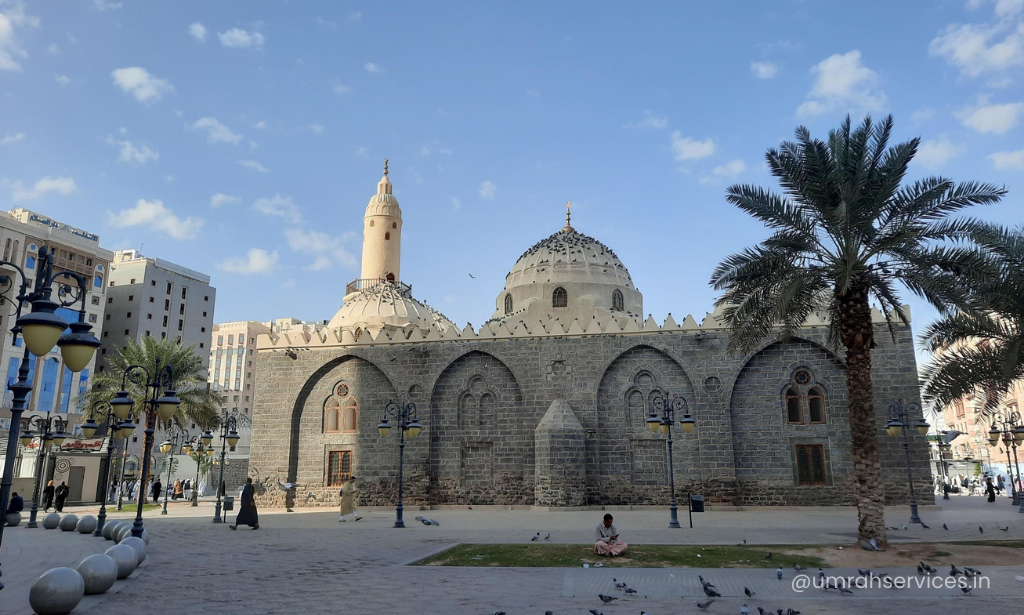
One of the major masjids close to the Prophet’s Mosque, Masjid Ghamama is an important historical site since it is where the Eid prayer was performed by the Prophet in 631. It acquired the name from an incident wherein a cloud, or Ghamama in Arabic, once cast its shade upon the Prophet while he prayed for rain.
This mosque reminds one of the proximity of the Prophet with Allah and also of the power of prayers. Pilgrims visit this mosque in remembrance of this miraculous event and to offer prayers.
Masjid Al-Ijabah (The Mosque of Answered Prayers)
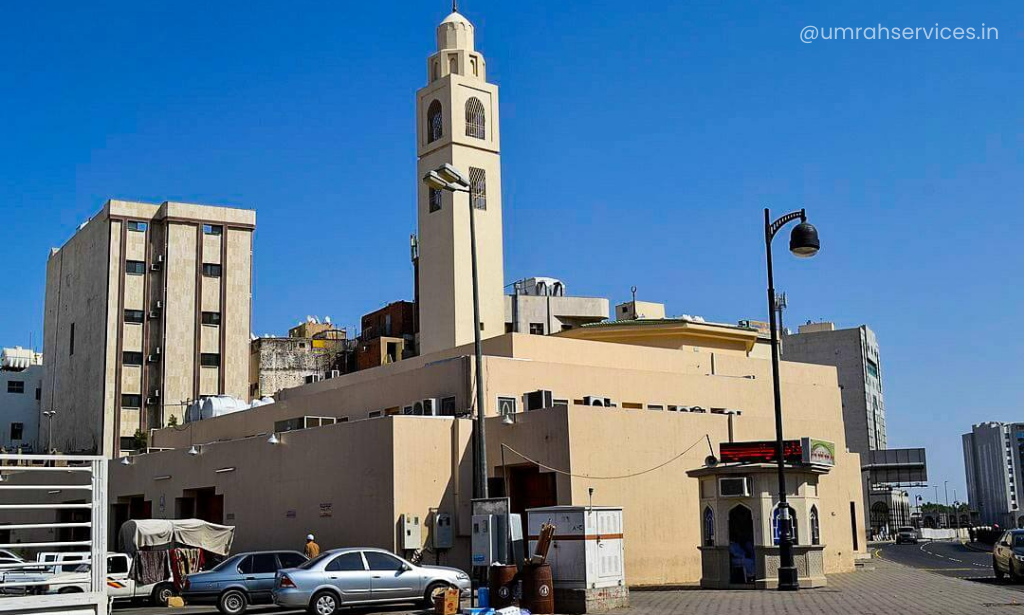
Another masjid in Madinah with a unique story is Masjid Al-Ijabah. It is named after the incident wherein the Prophet Muhammad (PBUH), prayed to Allah for three things, and two of his prayers were answered.
He (PBUH) asked for his Ummah to be protected against famine and drowning, both of which were accepted. His third request, to protect his Ummah from division, was denied. This mosque brings back the memory of how anxiously concerned the Prophet used to be for his followers and the power of prayer.
The Well of Uthman (Bir Ar-Rumah)
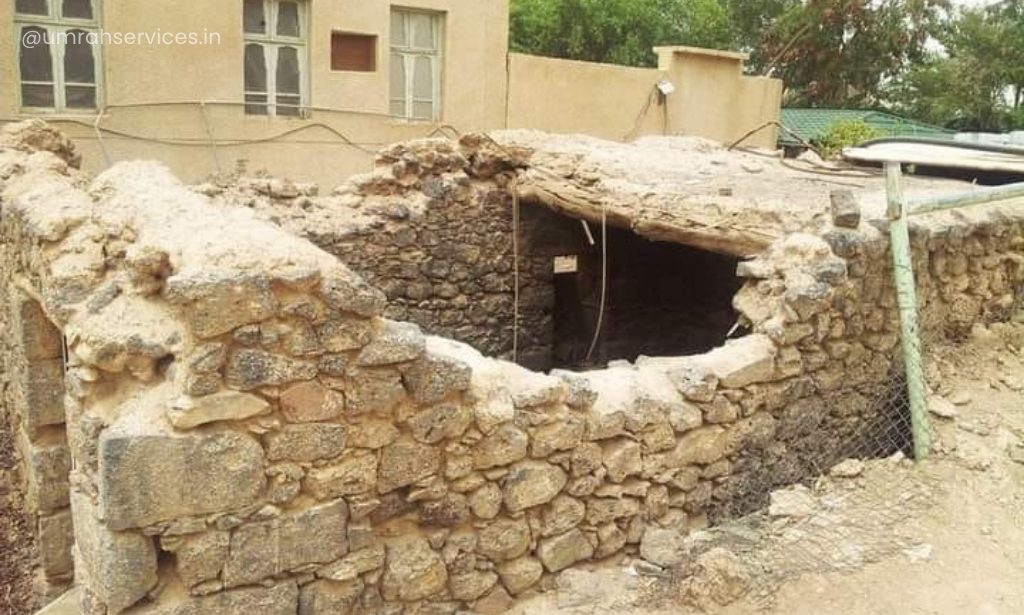
The Well of Uthman is located in Madinah and is associated with the third Caliph of Islam, Uthman ibn Affan (RA). The well was originally owned by a Jewish man who charged high prices for its water. Uthman (RA) purchased the well and made it free for the public.
This act of charity by Uthman (RA) is remembered as a significant contribution to the welfare of the people of Madinah. Pilgrims visit the site to honour his generosity and to reflect on the importance of charity in Islam.
Masjid Banu Qurayza

Masjid Banu Qurayza is located in the area where the Banu Qurayza Jewish tribe used to live. This place has its importance due to an event which occurred at this site during early Islamic history, where the Prophet, peace be upon him, judged the case of the treachery of this tribe during the Battle of Trench.
Visiting the mosque also allows reflection on the challenges that befell the early Muslim community, as well as how the Prophet did justice to the most troublesome situations.
Masjid Jumuah
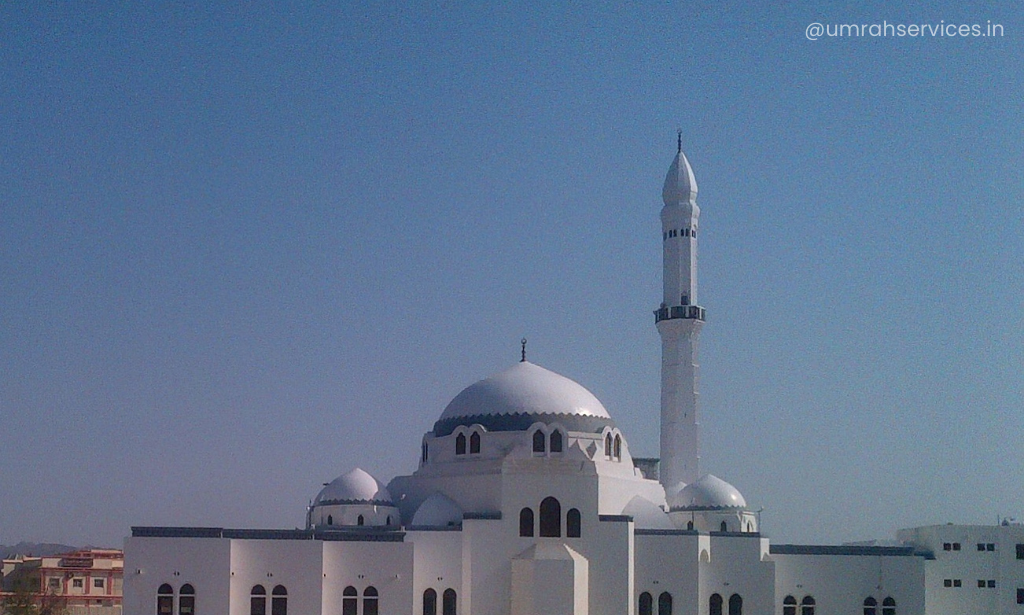
One of the older mosques, located in the Quba area of Madinah, Masjid Jumuah is an important mosque in Islamic history. It was here that Prophet Muhammad (PBUH) led the first-ever congregational Friday prayer, Salat al-Jumuah, after his migration, Hijrah, from Mecca to Madinah.
The mosque breeds historical reminiscence of the unity of the Ummah and the rise of the early Islamic community, hence marking the beginning of the Muslim Ummah. The pilgrims come to Masjid Jumu’ah to remind themselves of that most memorable moment in Islamic history and to perform Salah at this most blessed spot.
Also Read:- How to Perform Umrah
Cave of Bani Haram (The Cave of Refuge)

The Cave of Bani Haram, situated near Uhud Mountain, is a place that is blessed by an incident from Prophet Muhammad’s (PBUH) life. He rested in this cave during the Uhud Battle and used to take refuge therein. This is the place where the pilgrims reflect on all the hardships that the Prophet and his companions went through. It’s an important spot for reflection and Ziyarat.
Ethq Well
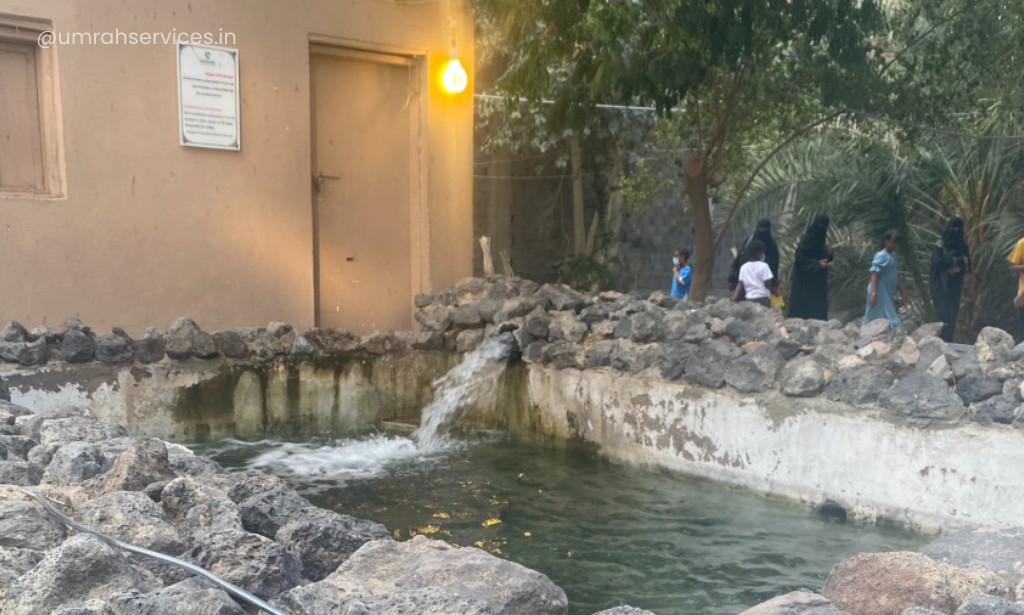
Ethiq Well, also known as Bir Ethq, is an ancient well in Medina dating back to historic and spiritual roots. It is believed that the Prophet Muhammad (PBUH) drank from this well and used this water for ablution.
This well is considered a source of blessed water, and it is often visited by pilgrims to acquire blessings by associating with prophetic traditions. The Ethq Well is considered to represent purity and the simple life of the Prophet (PBUH).
Conclusion
The list of ziyarat in Madinah contains many more historically and religiously important places that must be visited during the pilgrimage. All of these places present the visitors with an opportunity to reflect on the life of the Prophet Muhammad (PBUH) and his companions.
The ziyarat visits not only provide the pilgrims a chance to pay their respects and pray but also provide them with uplifted faith, and a refreshing understanding of the religion of Islam.
The visit to Madinah and places sanctified by the pilgrim is a journey of love, devotion, and reflection that leaves a permanent imprint on faith and life.
To Know More About Umrah Packages Visit to us
